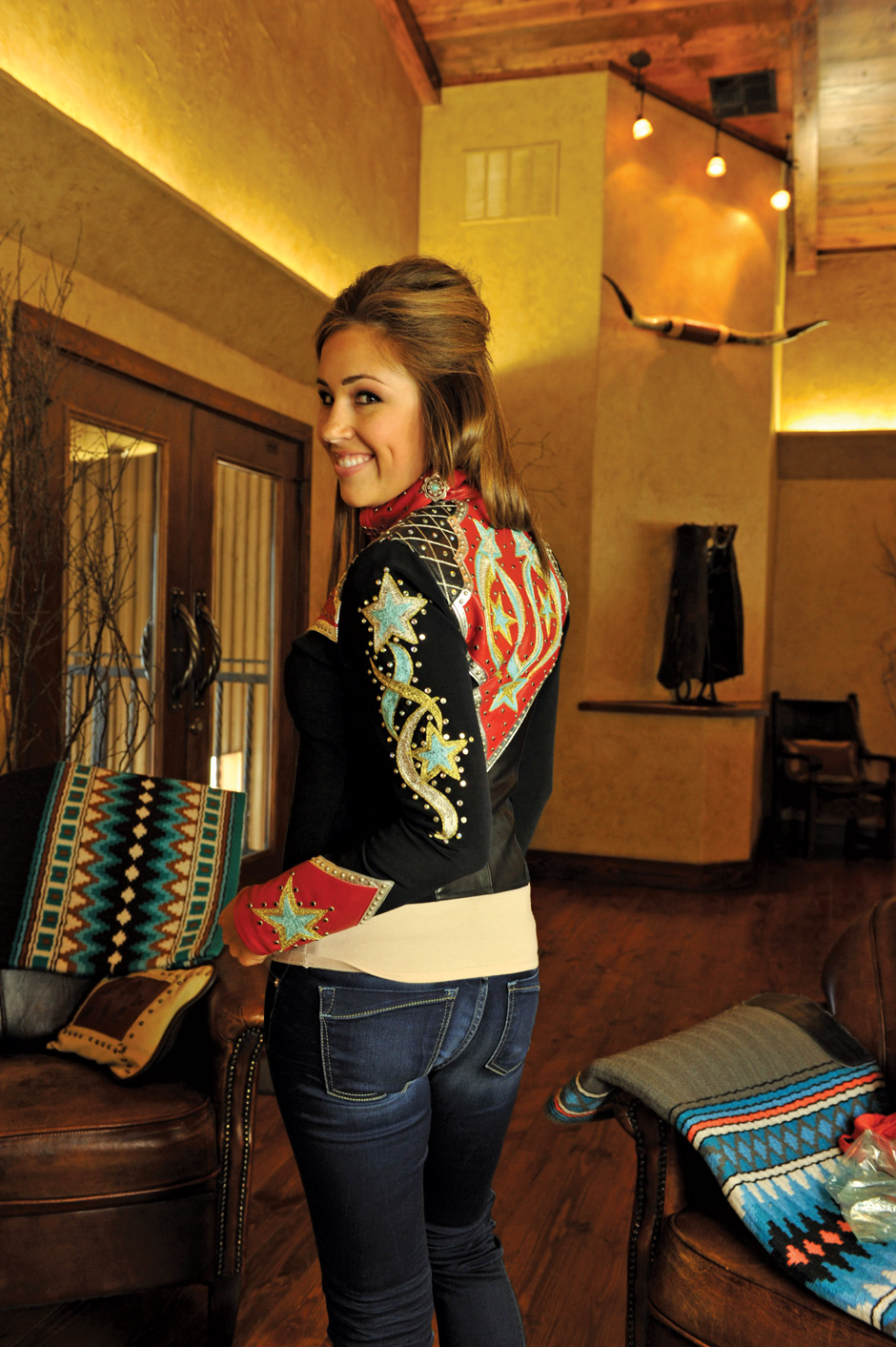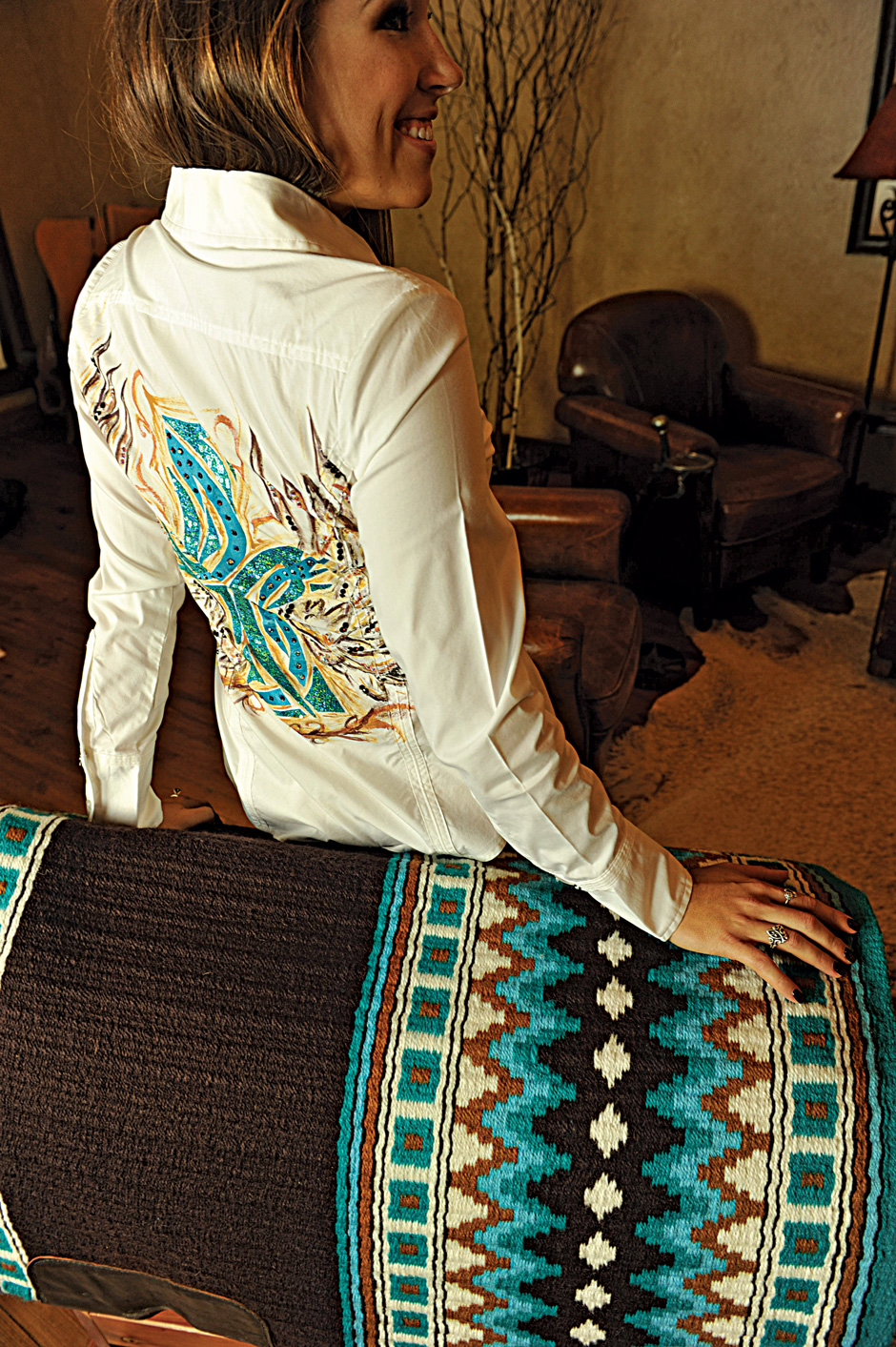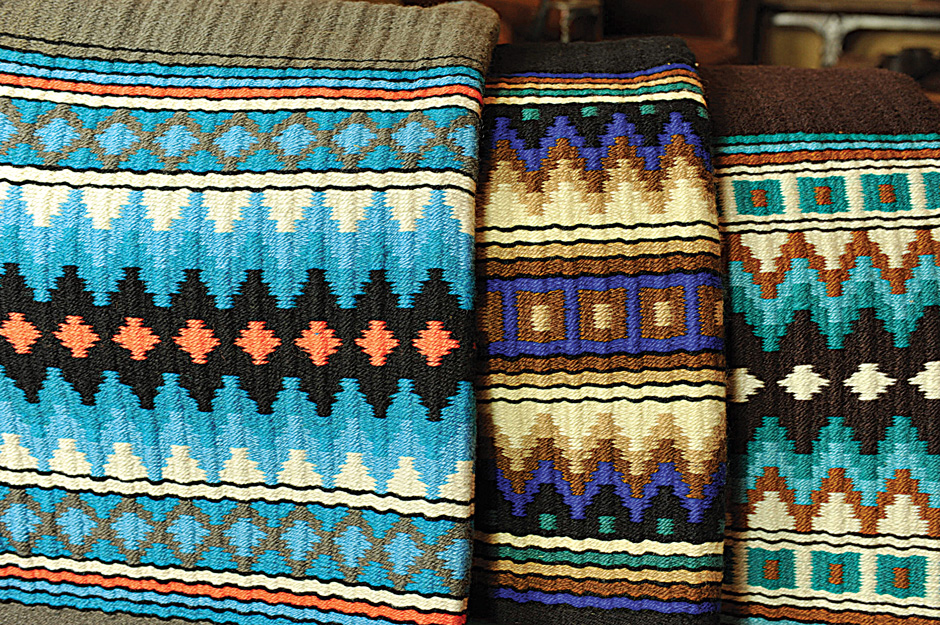Fundamental fashion guidelines reign supreme in western reining show pens.
Originally published eqliving.com/winter-201314/
Fashion has long been considered subjective, but in the horse-show world, tradition rules. Much like in the hunter and dressage rings, there are also expected turnouts in the western reining-show pens. They’re just a lot more colorful. Brianna Sloan, reining competitor and owner of Lucky Paint Custom Shirts, provided an introduction to western reining show wear.

Begin with the saddle blanket. Choose one that will complement the horse’s color and, if you can, try to have them custom made. The best blankets are hand made and more expensive, but they look better and last longer. There are extensive libraries of colors and designs to consider before selecting the perfect pattern.

The standard rule is to match your show shirt with the saddle blanket. Keep things on the simpler side. The objective is to complement the blanket, not compete with it. A neutral, well-tailored shirt is preferable and long sleeves are mandatory. If the shirt is clean, crisp, and fits well, it gets the job done–with or without embellishments. Decorative jackets and vests are also acceptable but should still reflect a classic approach to western wear.
The western hat conveys to the judges that you are a serious competitor. It’s essential that the hat is clean, nicely shaped, and fits well enough to stay on during competition. A flat hat will detract from the overall objective of looking sharp and professional as you enter the show pen.
Too much bling can be a detriment and a distraction to the judges. The horse should always be the main statement–not a pair of rhinestone-studded chaps. Our job is to make the horse look as good as it can, not ourselves.

The silver saddle is ubiquitous among western reining riders. Even if you don’t have the newest style and only have subtle silver enhancements, it has to be clean when you enter the show pen. Reiners typically have a weathered and worn work saddle and a silver show saddle that is stored in a bag and only used for competition. As in any other equestrian discipline, it’s a matter of stepping back and looking at the whole picture. It takes time and thought to put together a polished look.
